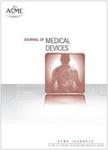版权所有:内蒙古大学图书馆 技术提供:维普资讯• 智图
内蒙古自治区呼和浩特市赛罕区大学西街235号 邮编: 010021

作者机构:Natl Univ Ireland Galway Coll Engn & Informat Biomech Res Ctr BMEC Biomed Engn Galway H91 HX31 Ireland
出 版 物:《JOURNAL OF MEDICAL DEVICES-TRANSACTIONS OF THE ASME》 (医疗设备杂志)
年 卷 期:2017年第11卷第2期
页 面:021013-021013页
核心收录:
学科分类:0831[工学-生物医学工程(可授工学、理学、医学学位)] 1001[医学-基础医学(可授医学、理学学位)] 10[医学]
基 金:Irish Research Council for Science, Engineering and Technology SFI/HEA Irish Center for High-End Computing (ICHEC)
主 题:computational modeling biodegradable stent neointimal remodeling
摘 要:Coronary stents made from degradable biomaterials such as magnesium alloy are an emerging technology in the treatment of coronary artery disease. Biodegradable stents provide mechanical support to the artery during the initial scaffolding period after which the artery will have remodeled. The subsequent resorption of the stent biomaterial by the body has potential to reduce the risk associated with long-term placement of these devices, such as in-stent restenosis, late stent thrombosis, and fatigue fracture. Computational modeling such as finite-element analysis has proven to be an extremely useful tool in the continued design and development of these medical devices. What is lacking in computational modeling literature is the representation of the active response of the arterial tissue in the weeks and months following stent implantation, i.e., neointimal remodeling. The phenomenon of neointimal remodeling is particularly interesting and significant in the case of biodegradable stents, when both stent degradation and neointimal remodeling can occur simultaneously, presenting the possibility of a mechanical interaction and transfer of load between the degrading stent and the remodeling artery. In this paper, a computational modeling framework is developed that combines magnesium alloy degradation and neointimal remodeling, which is capable of simulating both uniform (best case) and localized pitting (realistic) stent corrosion in a remodeling artery. The framework is used to evaluate the effects of the neointima on the mechanics of the stent, when the stent is undergoing uniform or pitting corrosion, and to assess the effects of the neointimal formation rate relative to the overall stent degradation rate (for both uniform and pitting conditions).